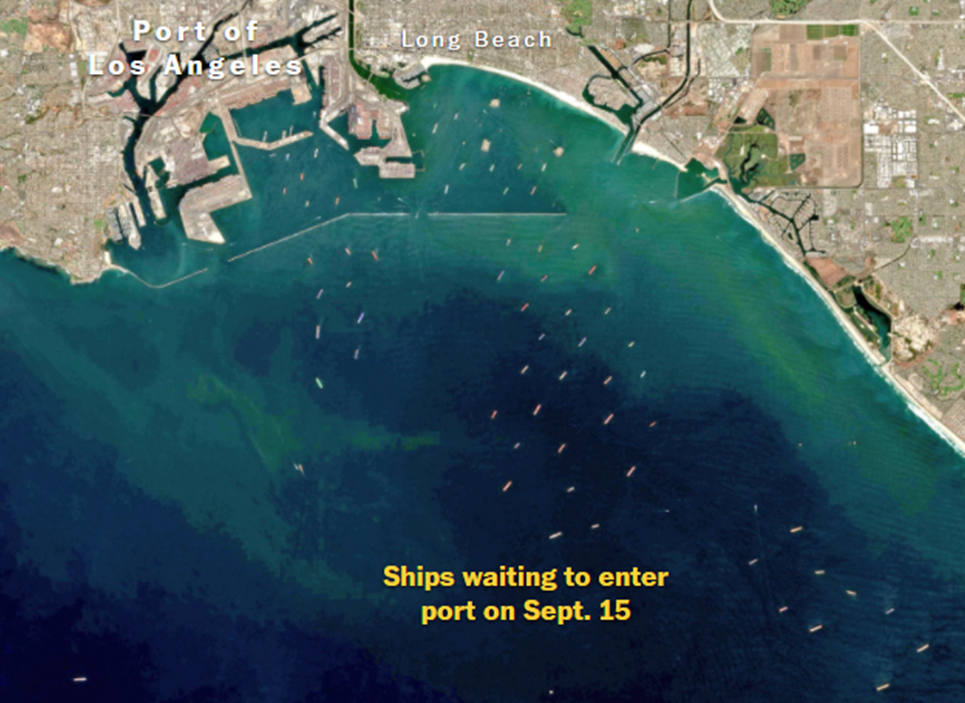The foreground of our picture is crowded. Too much demand for too much stuff. Too few containers for too much stuff. Too many ships waiting for too few cranes. Too many containers for too few chassis’ (truck or rail). Too much throughput for too few workers.
Contemporary supply chains are organized around demand. Fulfilling demand is the mission, purpose, obsession — perhaps even graven idol — of global business. So, eyes widened and jaws gaped on September 6 when Morten Engelstoft, CEO of APM terminals, told the truth to The Financial Times, “We need lower [consumer demand] growth to give the supply chain time to catch up, or differently spread out growth. Over a long period of time, we will need to recover efficiency.” (More and more and more.)
The FT reminds us, “US imported goods in July were up 20 per cent over the previous year and 11.5 per cent over 2019 as consumers splashed out, with their spending supported by stimulus measures since the second half of last year.”
The problem is most obvious at the Ports of Los Angeles and Long Beach, together the largest-by-far maritime cargo complex in the United States. Last week a record-setting sixty-plus ships were lined up waiting to unload. (See the satellite picture below and more from the Washington Post.)
Typically it is not darkest just before dawn, but we can confidently claim that dock density is worst just before incremental improvement:
The US personal savings rate has fallen to 9.6 percent, down from 26.6 percent as recently as March. American consumers still have a bit more cash-on-hand than pre-pandemic (February 2020: 8.3 percent), but the sense of having money to burn is unlikely to return.
On Friday (September 17) the LA-Long Beach ports announced they will facilitate more hours of truck access to retrieve and return containers. This is unlikely to increase the number of trucks, but it could increase velocity, almost certainly for truckers and trucks that arrive at off-peak-hours and maybe for the whole system if enough truckers decide to do so.
According to The Financial Times, the container construction industry, “is set to pump out a record 5.2m twenty-foot equivalent units (TEUs) this year, up two-thirds on 2020.”
With the usual shippers charging premium rates for tightly constrained capacity, alternative means and methods of moving cargo are beginning to fill some crucial gaps — for those able to pay. Non-traditional vessels are delivering to non-traditional ports that can move goods along less-crowded routes.
So, in the background of our current picture we may see dawn’s thin light rising to the east of crowded San Pedro Bay. There is finally some increased shipping capacity. There is incremental improvement in moving goods. But the current pile up is huge. Even if demand finally returns to something more sustainable, it will be months before something like 2019’s flow is experienced again.
